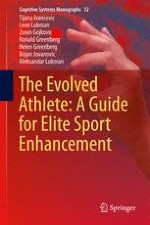2017 | OriginalPaper | Chapter
4. Biomechanics of Human Iliopsoas and Functionally Related Muscles
Authors : Tijana Ivancevic, Leon Lukman, Zoran Gojkovic, Ronald Greenberg, Helen Greenberg, Bojan Jovanovic, Aleksandar Lukman
Published in: The Evolved Athlete: A Guide for Elite Sport Enhancement
Publisher: Springer International Publishing
Activate our intelligent search to find suitable subject content or patents.
Select sections of text to find matching patents with Artificial Intelligence. powered by
Select sections of text to find additional relevant content using AI-assisted search. powered by
